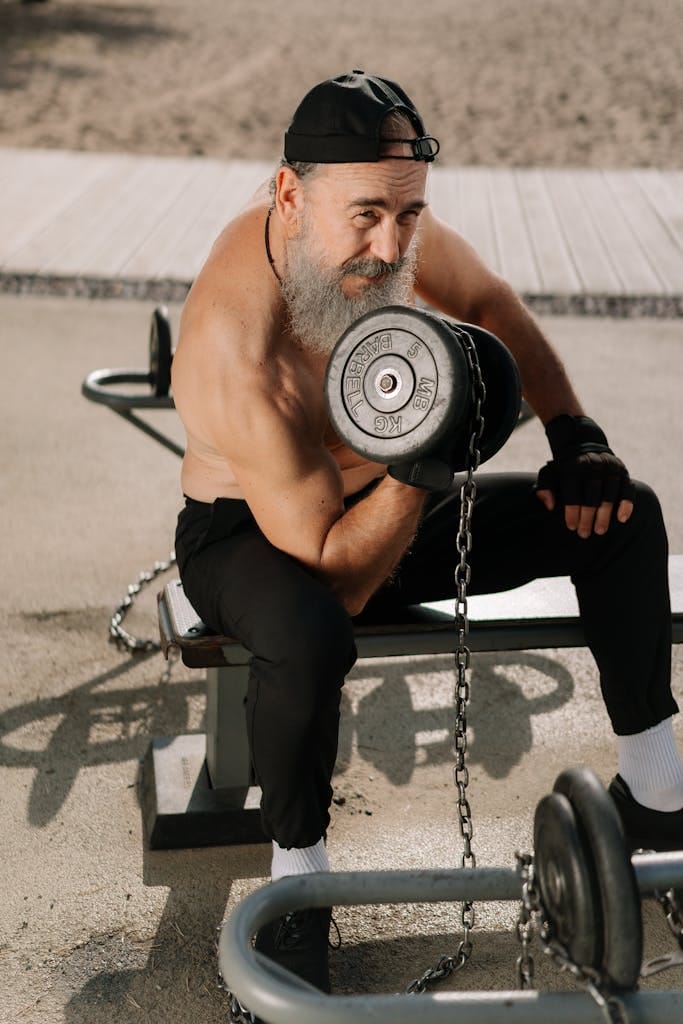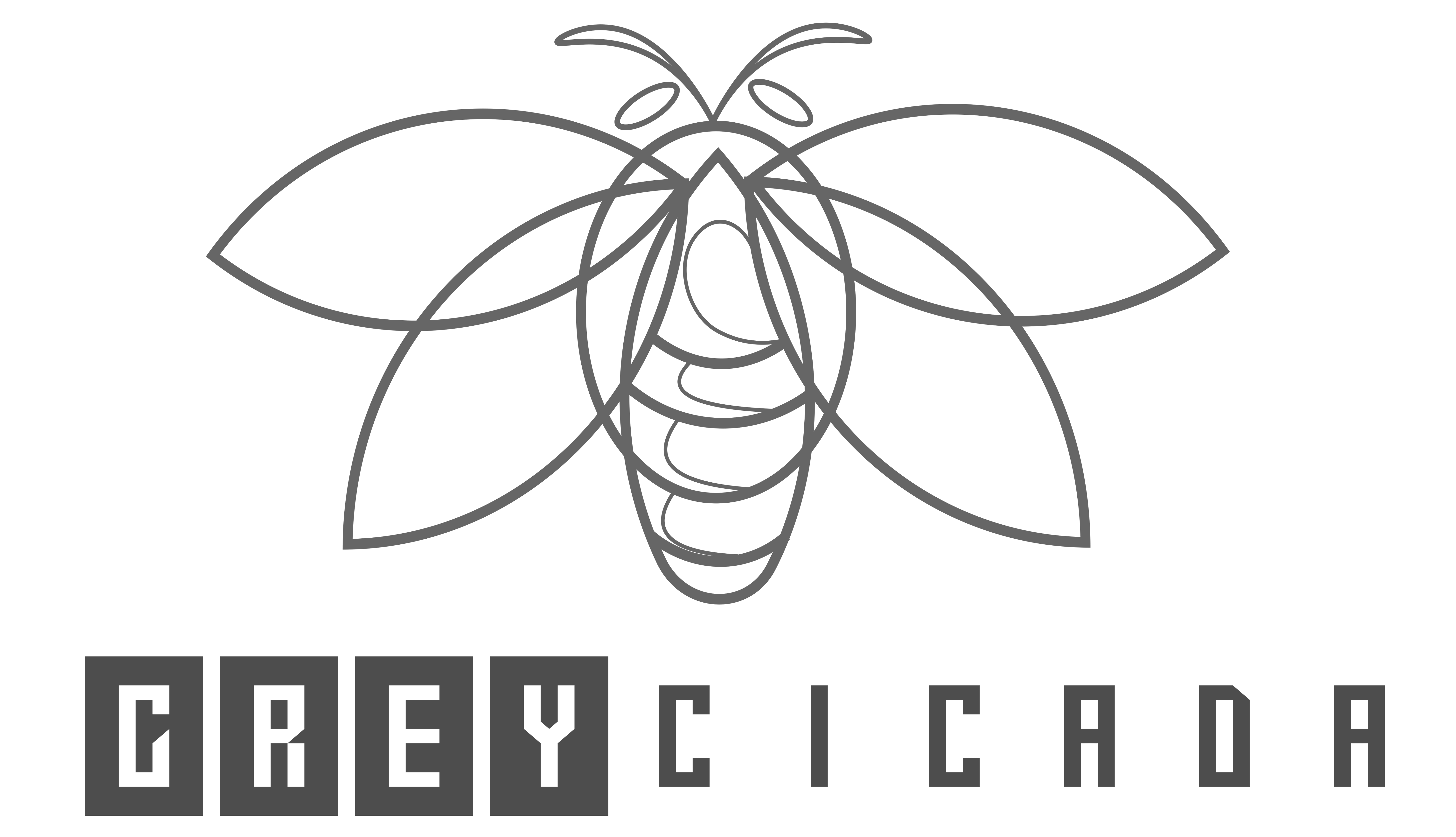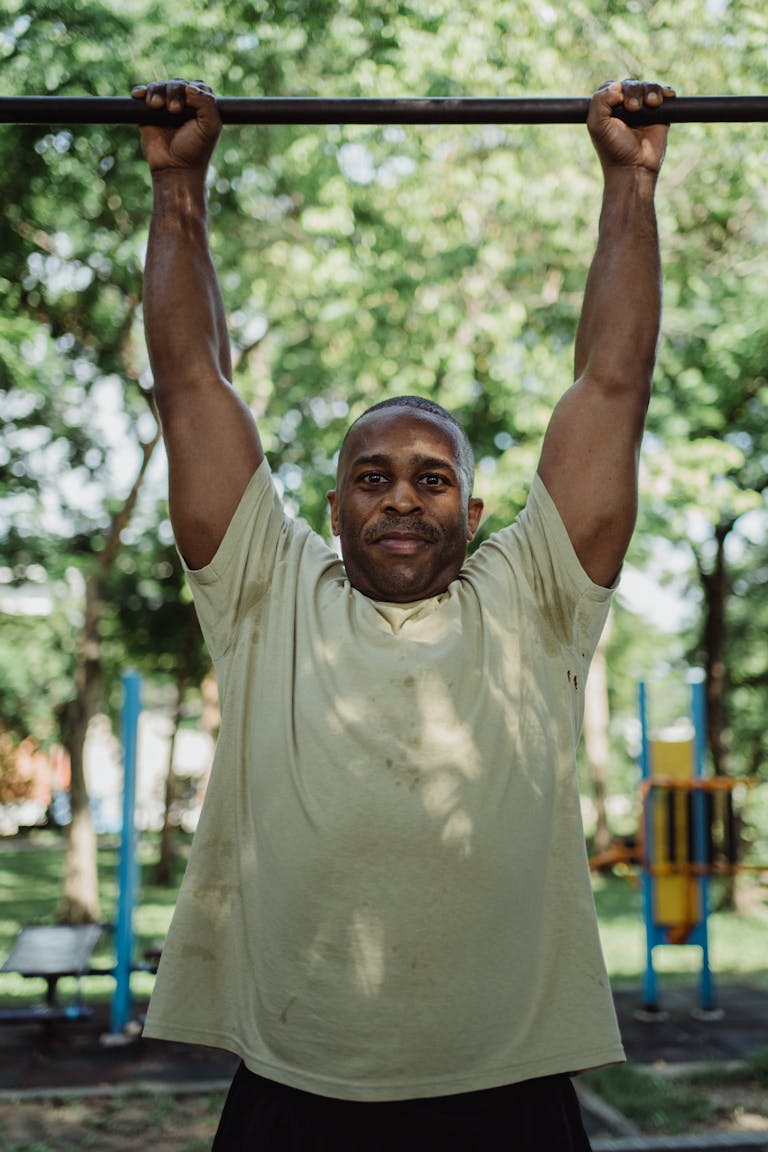FREE SHIPPING OVER $50
Defy Age: 4 Strength Workouts to Rebuild Muscle & Boost Vitality After 50
Hitting your 50s isn’t a signal to slow down; it’s an invitation to get smarter about your fitness. If you’ve noticed a dip in your strength, a change in your body composition, or simply don’t feel as energetic as you used to, you’re not imagining things. After 50, many of us start to experience a natural decline in muscle mass, a process called sarcopenia. It sounds scary, but it doesn’t have to be your reality.
The good news? You have immense power to defy age and reclaim your strength and vitality! The secret weapon? Strength training. Forget endless cardio or light weights that barely challenge you. We’re talking about strategic, effective strength workouts designed specifically to help you rebuild muscle, boost your metabolism, improve bone density, and maintain your independence for years to come.

The Power of Strength Training After 50
If you’re not already strength training, now is the perfect time to start. If you are, it’s time to optimize your approach. When you lift weights or use your body weight, you create tiny tears in your muscle fibers. Your body then repairs and rebuilds these fibers, making them stronger and larger. This process is called muscle hypertrophy, and it’s absolutely possible at any age!
Strength training after 50 offers incredible benefits:
- Rebuild Muscle Mass: Direct stimulation tells your body to maintain and even rebuild muscle.
- Boost Metabolism: More muscle means more calories burned at rest, aiding in weight management.
- Increase Bone Density: The stress of strength training stimulates bone growth, making them stronger.
- Improve Functional Strength: This is key! It translates to easier daily tasks, better balance, and a reduced risk of falls.
- Enhance Mental Well-being: Exercise is a powerful mood booster and can improve cognitive function.
- Boost Vitality and Energy: Feeling stronger directly translates to having more energy for the activities you love.
Ready to put this power into action? Let’s explore 4 strength workouts designed to help you rebuild muscle and boost vitality after 50.
Defy Age: 4 Strength Workouts to Rebuild Muscle & Boost Vitality After 50
These 4 strength workouts focus on compound movements (exercises that work multiple muscle groups at once), which are incredibly efficient and effective for muscle and strength building. Aim for 2-3 strength training sessions per week, allowing at least a day of rest between sessions for muscle recovery.
Before You Start Each Workout: Always begin with a 5-10 minute dynamic warm-up. Consider light cardio exercises (such as jogging in place or arm circles) and dynamic stretches (like leg swings or torso twists) to get your blood flowing and prepare your muscles for activity.
Workout 1: Total Body Power & Core Focus
This workout targets major muscle groups with an emphasis on core stability, which is crucial for overall strength and injury prevention as we age.
- Goblet Squats:
- Why it’s great: Works your quads, glutes, and core. It’s a fantastic compound movement that mimics daily activities like standing up from a chair. Holding the weight at your chest helps maintain good posture and core engagement.
- How to do it: Stand with feet shoulder-width apart, holding a dumbbell or kettlebell vertically against your chest. Keeping your chest up and core engaged, push your hips back and down as if sitting in a chair. Go as deep as comfortable, keeping your heels on the ground. Push through your heels to stand back up.
- Sets/Reps: 3 sets of 8-12 repetitions.
- Dumbbell Rows:
- Why it’s great: Targets your back muscles (lats, rhomboids) and biceps. Essential for good posture, pulling strength, and counteracting the “slouch” that can develop.
- How to do it: Place your left knee and left hand on a bench (or sturdy chair). Hold a dumbbell in your right hand, letting it hang straight down. Keep your back flat and core engaged. Pull the dumbbell up towards your chest, squeezing your shoulder blade. Lower with control.
- Sets/Reps: 3 sets of 8-12 repetitions per arm.
- Push-Ups (or Modified Push-Ups):
- Why it’s great: Works your chest, shoulders, and triceps, and is an excellent core exercise. It’s a fundamental pushing movement.
- How to do it: Start in a plank position, hands slightly wider than shoulder-width. Keep your body in a straight line, engaging your core. Lower your chest towards the floor by bending your elbows. Push back up to the starting position. If needed, perform on your knees or against a wall.
- Sets/Reps: 3 sets of as many repetitions as you can do with good form (aim for 8-15).
- Plank:
- Why it’s great: A phenomenal core strength builder. It works your transverse abdominis (your body’s natural corset) and entire midsection, crucial for spinal stability and injury prevention.
- How to do it: Start on your forearms and toes, keeping your body in a straight line from head to heels. Engage your core tightly, avoid sagging hips or arching your back.
- Sets/Reps: 3 sets, holding for 30-60 seconds (or as long as you can maintain perfect form).
Workout 2: Lower Body Strength & Stability
This workout emphasizes leg and glute strength, crucial for mobility, balance, and maintaining independence after 50.
- Dumbbell Lunges (or Reverse Lunges):
- Why it’s great: Excellent for building leg strength (quads, glutes, hamstrings) and improving balance. Lunges are highly functional for daily activities.
- How to do it: Stand with feet hip-width apart, holding a dumbbell in each hand. Step forward (or backward for reverse lunge) with one leg, lowering your hips until both knees are bent at about 90 degrees. Ensure your front knee is over your ankle. Push back up to the starting position.
- Sets/Reps: 3 sets of 8-12 repetitions per leg.
- Glute Bridges:
- Why it’s great: Directly targets your glutes and hamstrings, which are often underactive. Strong glutes are essential for a healthy lower back and powerful movements.
- How to do it: Lie on your back with knees bent, feet flat on the floor hip-width apart, arms at your sides. Engage your core and squeeze your glutes to lift your hips off the floor until your body forms a straight line from shoulders to knees. Hold briefly, then lower with control.
- Sets/Reps: 3 sets of 12-15 repetitions.
- Standing Overhead Press (Dumbbells):
- Why it’s great: Works your shoulders and triceps, and significantly engages your core for stability. Essential for functional movements like reaching overhead.
- How to do it: Stand with feet shoulder-width apart, holding a dumbbell in each hand at shoulder height, palms facing forward. Engage your core. Press the dumbbells directly overhead until your arms are fully extended. Lower with control.
- Sets/Reps: 3 sets of 8-12 repetitions.
- Bird-Dog:
- Why it’s great: A fantastic core stability and coordination exercise that protects your lower back. It trains your core muscles to stabilize your spine while your limbs move.
- How to do it: Start on your hands and knees, with your back flat. Engage your core. Slowly extend your right arm straight forward and your left leg straight back, keeping your hips level and core tight. Hold for a moment, then return to the start. Alternate sides.
- Sets/Reps: 3 sets of 10-12 repetitions per side.
Workout 3: Upper Body & Pulling Power
This workout focuses on building a strong upper back, biceps, and shoulders, vital for posture and everyday pulling movements.
- Band Pull-Aparts:
- Why it’s great: Excellent for strengthening the often-neglected rear deltoids and scapular stabilizers (the muscles that help control your shoulder blades). Crucial for posture and shoulder health.
- How to do it: Hold a resistance band with both hands, arms extended in front of you at shoulder height. Keeping your arms straight (or with a slight bend), pull the band apart by squeezing your shoulder blades together. Control the return.
- Sets/Reps: 3 sets of 15-20 repetitions.
- Dumbbell Bicep Curls:
- Why it’s great: Direct work for your biceps, essential for lifting and pulling.
- How to do it: Stand or sit, holding a dumbbell in each hand, palms facing forward. Keeping your elbows tucked, curl the dumbbells up towards your shoulders. Squeeze your biceps at the top, then lower with control.
- Sets/Reps: 3 sets of 10-15 repetitions.
- Dumbbell Tricep Extensions (Overhead or Kickbacks):
- Why it’s great: Targets the triceps, the muscle on the back of your arm. Important for pushing movements and overall arm strength.
- How to do it (Overhead): Sit or stand, holding one dumbbell with both hands directly overhead. Lower the dumbbell behind your head by bending your elbows. Extend your arms to lift the dumbbell back up.
- Sets/Reps: 3 sets of 10-15 repetitions.
- Renegade Rows (Modified on Knees if needed):
- Why it’s great: A challenging full-body strength and core stability exercise. Works your back, shoulders, and core simultaneously.
- How to do it: Start in a plank position with a dumbbell in each hand (hands gripping the dumbbells, not flat on the floor). Keep your core extremely tight and hips stable. Row one dumbbell up towards your chest, squeezing your shoulder blade, without letting your body twist. Lower with control and repeat on the other side. You can perform this from your knees if maintaining balance is difficult initially.
- Sets/Reps: 3 sets of 6-10 repetitions per arm.
Workout 4: Full Body Functional & Metabolic Boost
This workout combines elements to give you a full-body challenge, promote functional strength, and boost your metabolism.
- Kettlebell Swings (or Dumbbell Swings):
- Why it’s great: An explosive full-body movement that powerfully engages your glutes, hamstrings, and core. It’s fantastic for building power, boosting your heart rate, and burning calories.
- How to do it: Stand with feet slightly wider than shoulder-width, holding a kettlebell or dumbbell with both hands. Hinge at your hips, pushing your glutes back and slightly bending your knees, allowing the weight to swing between your legs. Explosively drive your hips forward, squeezing your glutes, to swing the weight up to chest height. Let gravity bring the weight back down, controlling the descent.
- Sets/Reps: 3 sets of 10-15 repetitions. Focus on the hip hinge, not a squat.
- Step-Ups (onto a bench or sturdy chair):
- Why it’s great: A highly functional exercise that directly translates to climbing stairs, improving leg strength, glutes, and balance.
- How to do it: Stand in front of a sturdy box or bench. Step up onto the box with one foot, driving through your heel to stand up fully, bringing your other foot to meet it. Step back down with control. Alternate legs or complete all reps on one side before switching.
- Sets/Reps: 3 sets of 10-15 repetitions per leg.
- Seated Cable Rows (or Dumbbell Rows from Workout 1):
- Why it’s great: Targets the entire back and biceps, essential for posture and pulling strength.
- How to do it (Seated Cable Row): Sit at a cable row machine, feet on the footplate, knees slightly bent. Grab the handle(s) with palms facing each other. Lean back slightly, keeping your core engaged and back straight. Pull the handle(s) towards your lower abdomen, squeezing your shoulder blades together. Control the return.
- Sets/Reps: 3 sets of 10-15 repetitions.
- Farmer’s Walk:
- Why it’s great: An amazing full-body functional strength and core stability exercise. It builds grip strength, shoulder stability, and core strength, all crucial for daily life.
- How to do it: Hold a heavy dumbbell or kettlebell in each hand, arms extended by your sides. Keep your shoulders back, chest up, and core engaged. Walk for a set distance (e.g., 50-100 feet) or time (e.g., 30-60 seconds).
- Sets/Reps: 3 sets for distance or time.
Conclusion
The idea of muscle loss after 50 might seem daunting, but it’s a challenge you absolutely can defy. By consistently engaging in strength training and incorporating these 4 powerful workouts into your routine, you’re not just fighting against age-related decline; you’re actively building a stronger, more resilient, and more vibrant version of yourself.
Embrace these strength workouts, fuel your body with good nutrition, prioritize rest, and watch as your strength soars, your vitality returns, and you feel more capable and confident in every aspect of your life. This isn’t just about preserving muscle; it’s about preserving your independence, energy, and zest for life well into your later years. Get ready to feel strong, empowered, and truly defy age!
Related Articles
- Men Over 45: Can You Pass These 5 Vital Strength & Longevity Tests?
- Is Your Workout HARMING You? 10 Science-Backed Ways Exercise Can Secretly Hurt Your Health
- Stop Dropping the Bar! The Ultimate Deadlift Grip Guide for Heavier Lifts
- The Pushup Test: Can You Out-Perform 90% of People Over 40?
- Sculpt Your Six-Pack at Home: Just 10 Minutes, Zero Equipment Needed!







